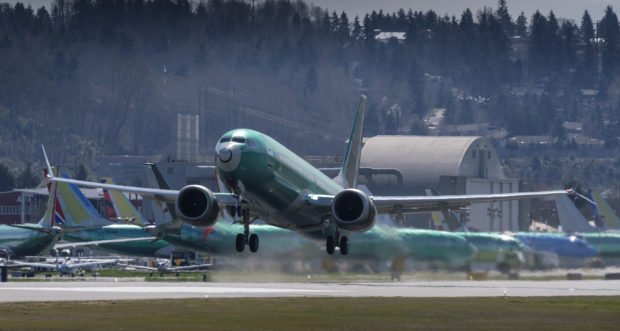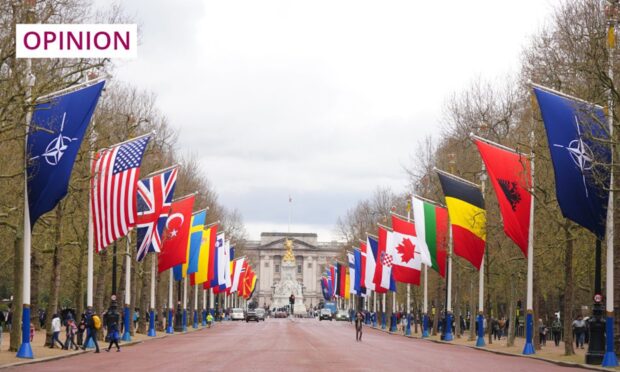I remember the surprise I felt, during my second interview having left the RAF, on being challenged: “what do you know about risk?”.
It was delivered in a way that suggested the questioner thought the answer was ‘not much at all’. So I answered immediately: “quite a lot”.
The executive seemed genuinely shocked. I went on to explain that as a pilot you continually manage risk, from planning through execution to debrief. And the effective management of risk is possibly one of the most talked about and misunderstood topics after leadership.
Fundamentally risk is an uncertain event, or series of events which will, should they occur, have an effect on the achievement of planned objectives. And risk can be both good and bad, and is specific to the context in which it is being considered.
An aircraft is an inherently unstable platform that carefully balances gravity, lift, thrust and drag to achieve controlled flight and safe operation – the objective. There is little control by the pilot over the weather in which they fly (other than to avoid it when it is bad) or the plethora of external influences that can change the status of the desired controlled flight. But this isn’t meant to be an article on how an aircraft flies, but rather the matter of how hiding risk can put lives at risk – be it aviation or any nature of business.
It appears highly likely that both the Boeing 737 Max-8 crashes suffered from the interference of a ‘hidden risk’ not exposed to the pilots for the alleged notion of not wishing to ‘overload them’ – as quoted by a senior Boeing executive to the Wall Street Journal.
The fact of the matter is that the Boeing 737 Max-8 is fitted with a Manoeuvring Control Augmentation System (MCAS) – designed to cater for a design outcome – that ‘seamlessly’ assists the pilot in particular regimes of flight. In essence the MCAS is a safety system addressing an operating risk.
The fact that the MCAS is not mentioned in the aircrew flight operating manuals would suggest that operating crews do not formally know about it and consequently when things go wrong, have no ability to counter or override the un-demanded departure from controlled flight.
More disappointing was Boeing’s response. To tell the world that it was ‘addressing software issues’ is both disingenuous and patronising. I suspect that the issues behind the crashes are more complex and most likely systemic in nature. But that is the domain of the board of inquiry.
But aviation isn’t the only environment where hidden risk carries a significant consequence. Whilst the lens of media, sites of social media and mainstream reporting focussed on the outrage and tragedy in New Zealand and the fact that the British political classes were in free-fall, an apocalyptic ‘natural’ catastrophe was playing out in the southern African continent, changing the lives for 100,000s of people – and without one word of reporting until four days after the disaster commenced. Indeed, such is the scale of the storm damage in the three affected nations that it is visible from space, and up to 1.7 million people fell under the cyclone pathway.
The hidden risks here are authority, communication and an obsession with status; the poor choice of priorities, the inability to deliver effectively and the squandering of materiel.
Most humbling is the evident human compassion from the neediest people that are helping the survivors in their time of need – not the governments or international community.
I am not saying that these hidden risks caused the catastrophe; what I am saying is that the evident failure of authorities to govern effectively has undermined the affected nations’ ability to react to rapidly changing circumstance as well as to properly support its peoples in their time of need. Of course, institutions such as the UN continue to make inroads into the cultures that continue to foster this nature of governing – but there is no doubt that these risks costs lives.
Returning to aviation, regulation of all aspects of the industry is enacted by organisations such as the Civil Aviation Authority here in the UK or the Federal Aviation Administration (FAA) in the USA. Their primary focus is safety.
It is alleged that Boeing ‘quietly’ added MCAS “to compensate for some unique aircraft handling characteristics” during the certification process.
The clear inference is that the FAA and Boeing are “too close”. A new head of the FAA was appointed last week; a role that had been vacant for 15 months.
Back in the days of the Apollo space race President John F Kennedy commented of the programme “that as our knowledge increases, our ignorance unfolds”. Effective risk management is all about addressing our ignorance.
When the potential risks are understood but ignored, that ignorance becomes arrogance, be it individual or corporate.
Boeing certainly has some questions to answer.
James Johnston is a business owner, chair of the The Malt Whisky Trail and served as Station Commander for RAF Kinloss











